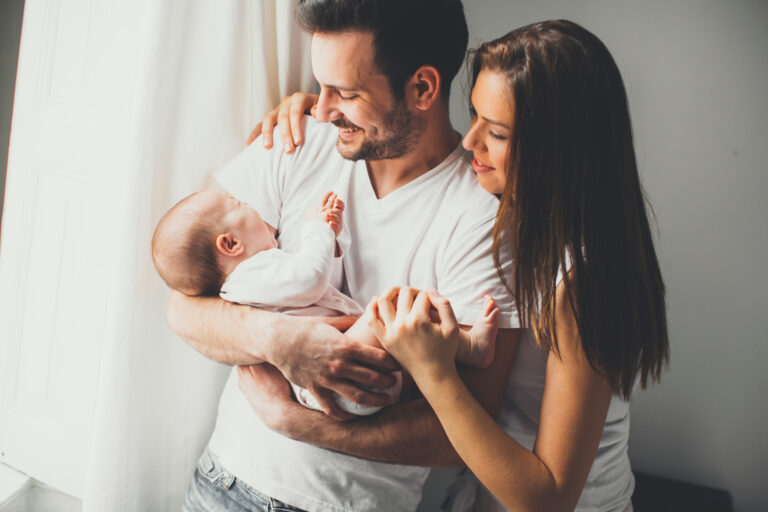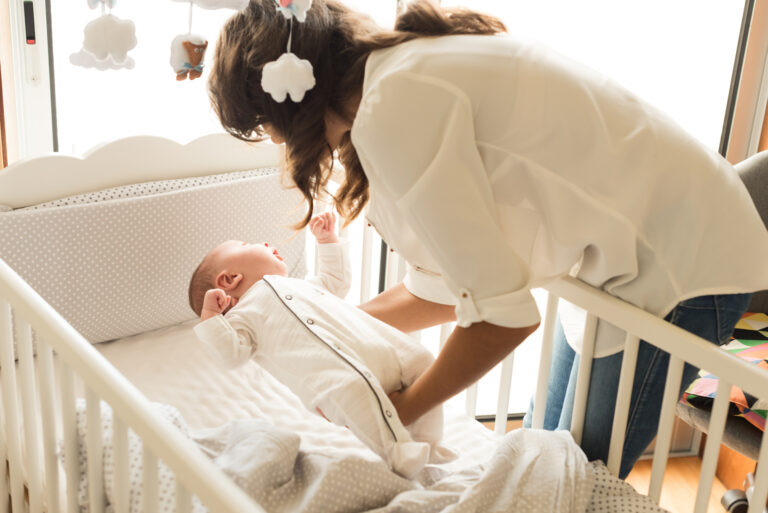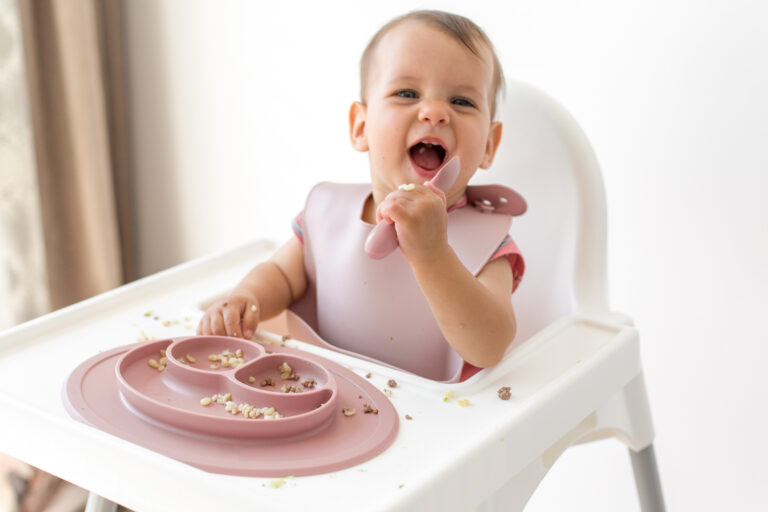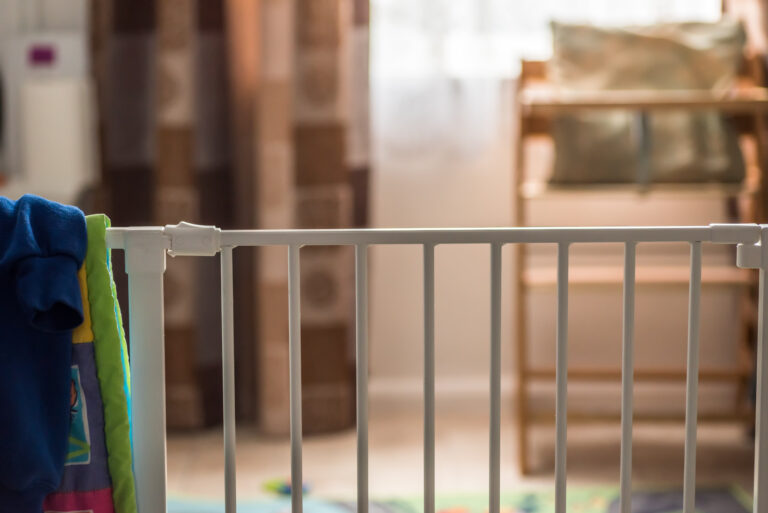An average of 134 children in Victoria reach year required hospital treatment for cot-related injuries. Most occurred when the child fell from the cot, while others got their arm or foot stuck in between the bars.
Above all else, ensure your baby’s cot, mattress, or bedding complies with the proper manufacturing standards. This includes AS/NZS 2172 for cots, AS/NZS 2195 for portable cots, and AS/NZS 8811.1:2013 for mattresses. These standards require the cot to meet the requirements for stability, durability, strength, and impact.
When assessing the safety of the cot, keep an eye out for the following:
- The cot’s bars should sit between 50 and 95mm. Anything wider can trap your child’s head.
- The base to the top of the cot should measure at least 600mm. This is essential in preventing falls once your baby can stand.
- Check for any holes or openings between 5 mm and 12 mm that could trap your child’s fingers.
- Make sure there are no horizontal bars or footholds that bub can leverage to climb out.
- Check the firmness of the mattress and ensure it fits snugly into the cot.
- Remove any crib bumpers.
- The sides of the mattress to the ends of the cot should measure no longer than 20mm. Anything wider and your child’s head, arms, or legs can get caught.
- Ensure the cot has four castors, one pair including brakes.
- Regularly check the tightness of the nuts and bolts as per the maintenance instructions that come with the cot.
- Lift the drop side when your baby is sleeping.
Once you’ve bought, assembled, and are using the cot, don't make any alterations, as this can compromise the stability and safety of your baby’s sleeping environment. To reduce the risk of suffocation and keep bub’s bedroom as safe as possible, we’d avoid using any plush toys, pillows, doonas, or restraints as these can pose the risk of suffocation.
Ensure the cot is positioned away from all heaters, power points, curtains, and blind cords, as these can pose a fire hazard and strangulation hazard if your baby gets curious. Don’t hang any pictures or mirrors up nearby, and make sure their mobile is out of reach if you’re using one.
Portable cots are intended for short-term use. While they are handy if you’re travelling, portable cots are not as durable or suitable for larger babies, so it's better to use a standard cot for everyday use.
When looking for a portable cot, make sure it ticks the following boxes:
- The cot is 500mm deep from the top of the mattress.
- It has a firm mattress that touches each side of the cot.
- There are no footholds so baby can climb out.
- It has locking devices on the frame with clear locked positions so your child cannot unlock them.
- It comes with instructions to ensure correct assembly.
- It comes with a warning not to add an extra mattress, to only use a mattress with specific dimensions or to only use the supplied mattress.
Before inserting your child into the cot, check it's properly locked together and stable. Once you begin using it, do not make any alterations.



